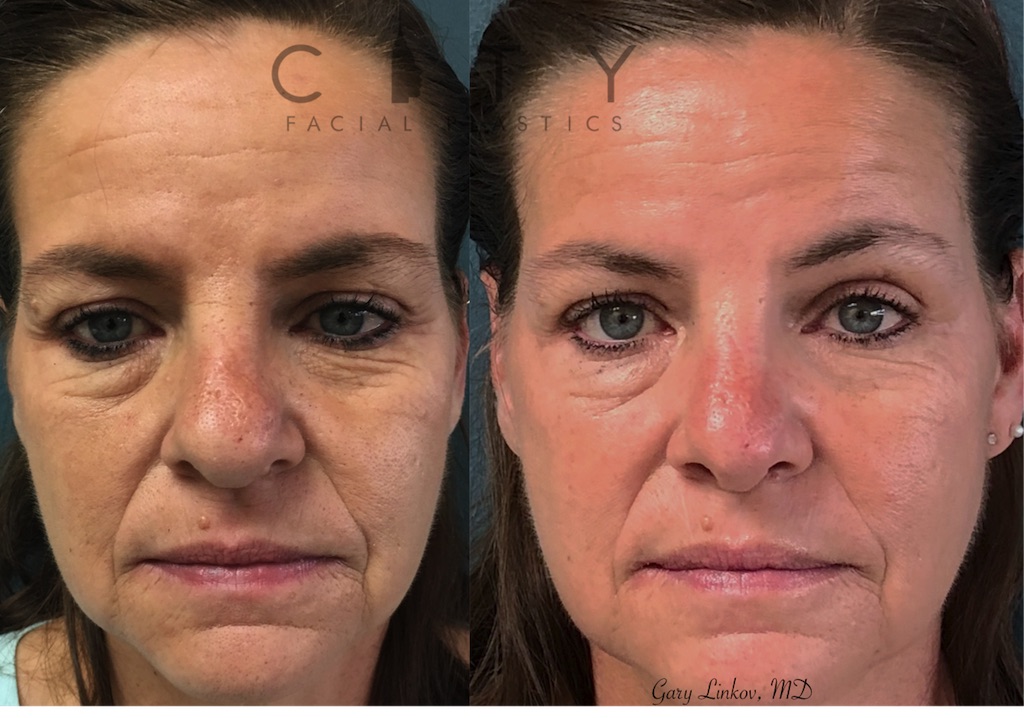Not known Details About Nose Job Austin Tx
Table of ContentsGetting My Nose Job Austin Tx To WorkThe Definitive Guide for Nose Job AustinSome Known Incorrect Statements About Nose Job
Photograph 4. Nasal bulge excision: The black delineation indicates the preferred nose-reduction outcome: a straight nose. The nasal bulge is bone (red) above the scalloped grey line, and cartilage (blue) listed below the scalloped grey line. The surgeon cuts the cartilage portion of the bulge with a scalpel, and chisels the bone portion with an osteotome (bone chisel).Rhinoplastic instruments: Bone-scraping rasps, of different grades and types, that the cosmetic surgeon uses to refine the corrections needed to produce a brand-new nose. In plastic surgical praxis, the term primary rhinoplasty denotes a preliminary (newbie) reconstructive, functional, or visual corrective treatment. The term secondary rhinoplasty signifies the modification of a failed rhinoplasty, an incident in 520 percent of rhinoplasty operations, thus a modification nose job.
Although most revision nose job treatments are "open technique", such a correction is more technically complicated, typically since the nasal support structures either were deformed or ruined in the main nose job; thus the surgeon must re-create the nasal assistance with cartilage grafts gathered either from the ear (auricular cartilage graft) or from the rib cage (costal cartilage graft).
In reconstructive rhinoplasty, the flaws and deformities that the cosmetic surgeon encounters, and should bring back to typical function, form, and appearance consist of broken and displaced nasal bones; interfered with and displaced nasal cartilages; a collapsed bridge of the nose; congenital problem, injury (blunt, penetrating, blast), autoimmune disorder, cancer, intranasal drug-abuse damages, and failed main rhinoplasty outcomes.
When cartilage is interrupted, suturing for re-suspension (structural assistance), or making use of cartilage grafts to camouflage an anxiety allow the re-establishment of the normal nasal shape of the nose for the client. When the bridge of the nose is collapsed, rib-cartilage, ear-cartilage, or cranial-bone grafts can be used to restore its structural stability, and therefore the aesthetic continuity of the nose.

Austin Rhinoplasty - Truths
Surgically, the borders of the nasal subunits are ideal areas for the scars, where is produced an exceptional aesthetic outcome, a fixed nose with corresponding skin colors and skin textures. Nasal skeleton Therefore, the effective rhinoplastic result depends entirely upon the respective upkeep or restoration of the anatomic integrity of the nasal skeleton, which consists of (a) the nasal bones and the ascending procedures of the maxilla in the upper third; (b) the paired upper-lateral cartilages in the middle third; and (c) the lower-lateral, alar cartilages in the lower 3rd (nose job).
The paired alar cartilages configure a tripod-shaped union that supports the lower third of the nose. The paired median crura conform the central-leg of the tripod, which is attached to the anterior nasal spinal column and septum, in the midline. The lateral crura make up the second-leg and the third-leg of the tripod, and are connected to the (pear-shaped) pyriform aperture, the nasal-cavity opening at the front of the skull.
the nasal lining A thin layer of vascular mucosa that adheres securely to the deep surface area of the bones and the cartilages of the nose. Said thick adherence to the nasal interior limits the mobility of the mucosa, as a result, just the tiniest of mucosal problems (< 5 mm) can be sutured mostly.

Moreover, concerning scarrification, when compared to the skin of other facial locations, the skin of the nose produces fine-line scars that generally are unnoticeable, which enables the cosmetic surgeon to tactically conceal the surgical scars. Principles The technical concepts for the surgical reconstruction of a nose derive from the vital operative concepts of plastic surgical treatment: that the applied treatment and strategy( s) yield the most satisfactory functional and visual result.
Nevertheless, the physician-surgeon and the rhinoplasty client need to abide the reality that the rebuilded nasal subunit is not a nose correct, however a collagen- glued collageof forehead skin, cheek skin, mucosa, vestibular lining, nasal septum, and fragments of ear cartilagewhich is viewed as a nose only due to the fact that its shape, skin color, and skin texture are true to the initial nose - nose job austin.
More About Nose Job Austin Tx
1. 0 metre). Yet, such an aesthetic result suggests the application of a more complex surgical approach, which needs that the cosmetic surgeon balance the patient's needed rhinoplasty, with the client's visual perfect (body image). In the context of surgically reconstructing the patient's physiognomy, the "typical nose" is the three-dimensional (3-D) template for changing the missing out learn this here now on part( s) of a nose (aesthetic nasal subunit, visual nasal segment), which the cosmetic surgeon re-creates using company, malleable, modelling materialssuch as bone, cartilage, and flaps of skin and of tissue.
To effect a total nasal reconstruction, the design template may originate from quotidian observations of the "typical nose" and from pictures of the patient before she or he suffered the nasal damage (nose job austin tx). The surgeon replaces missing parts with tissue of like quality and quantity; nasal lining directory with mucosa, cartilage with cartilage, bone with bone, and skin with skin that best match the native skin color and skin texture of the harmed nasal subunit.
Additionally, in spite of its notable scarring propensity, the nasal skin flap is the prime consideration for nasal reconstruction, due to the fact that of its greater verisimilitude. The most effective nasal restoration for fixing a defect (wound) of the nasal skin, is to re-create the whole nasal subunit; thus, the injury is bigger to comprehend the whole nasal subunit.